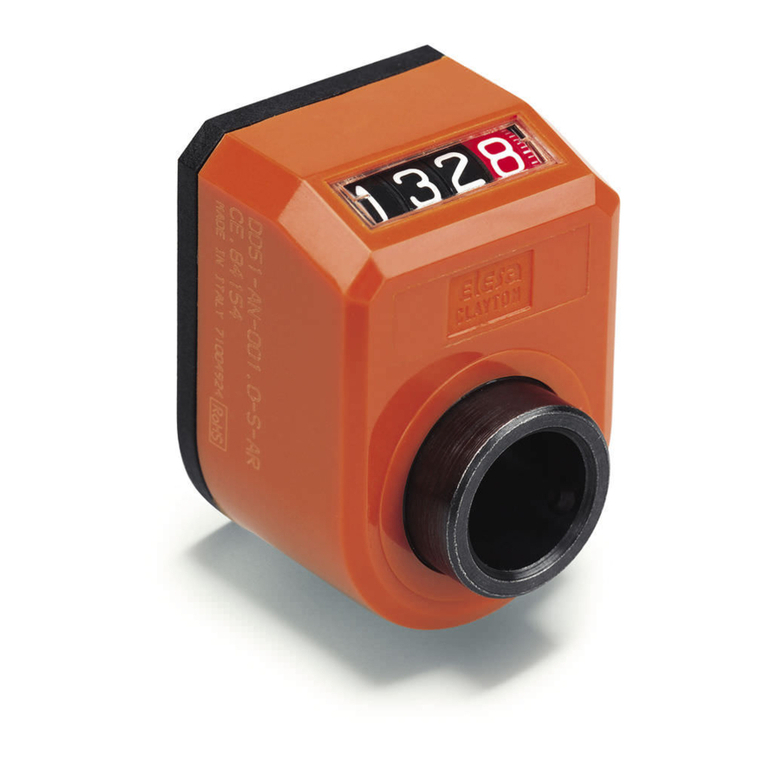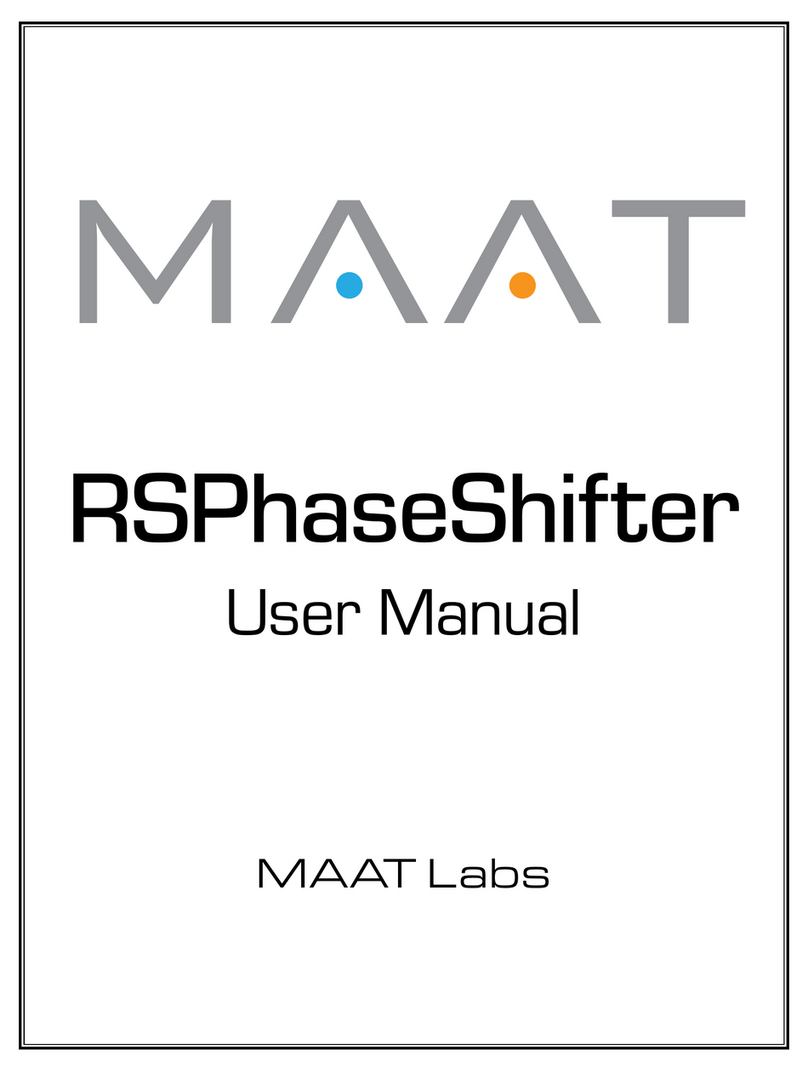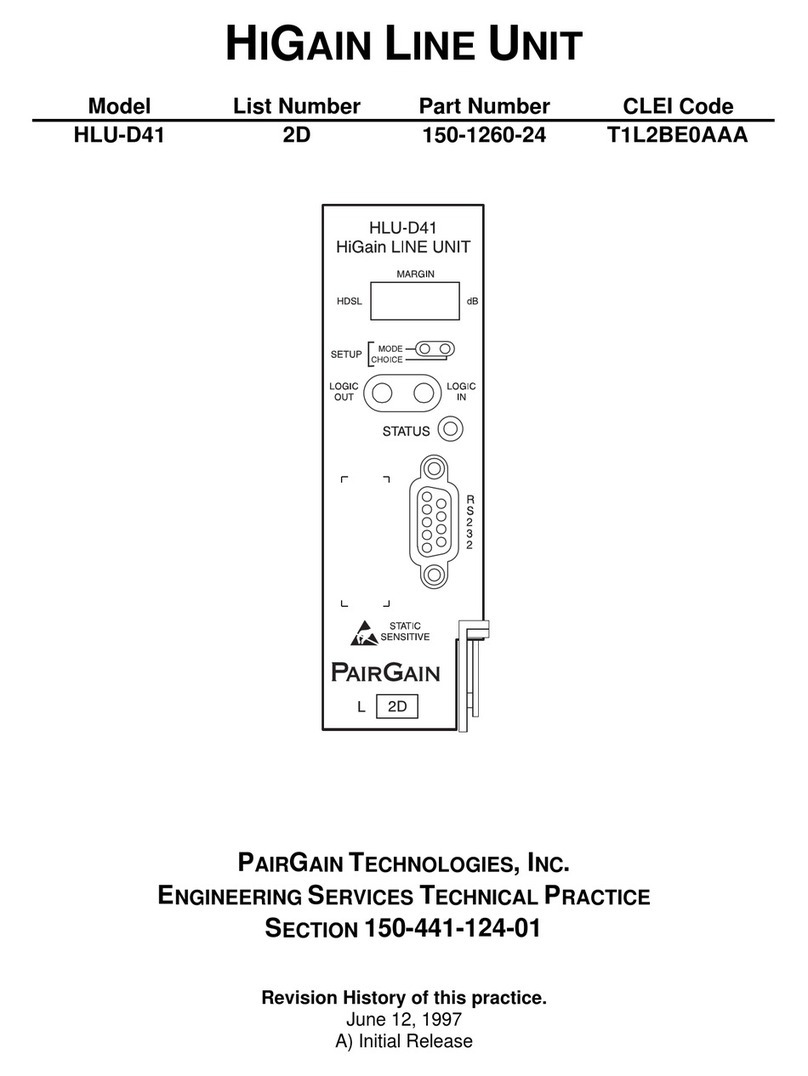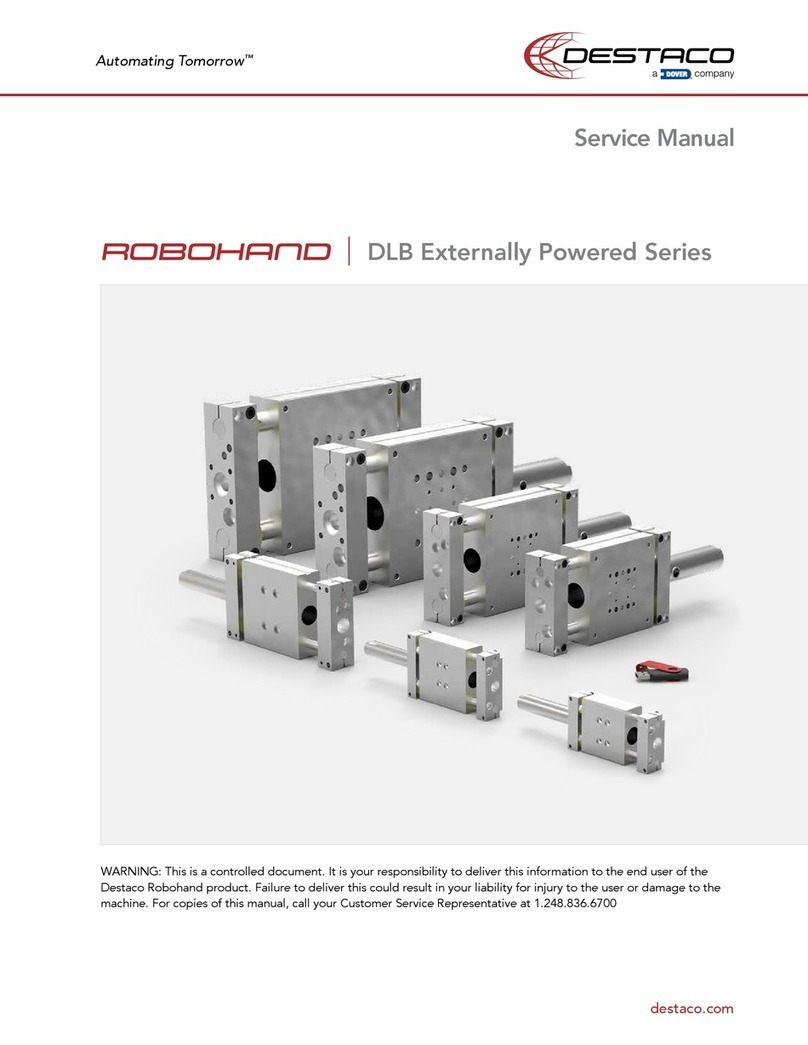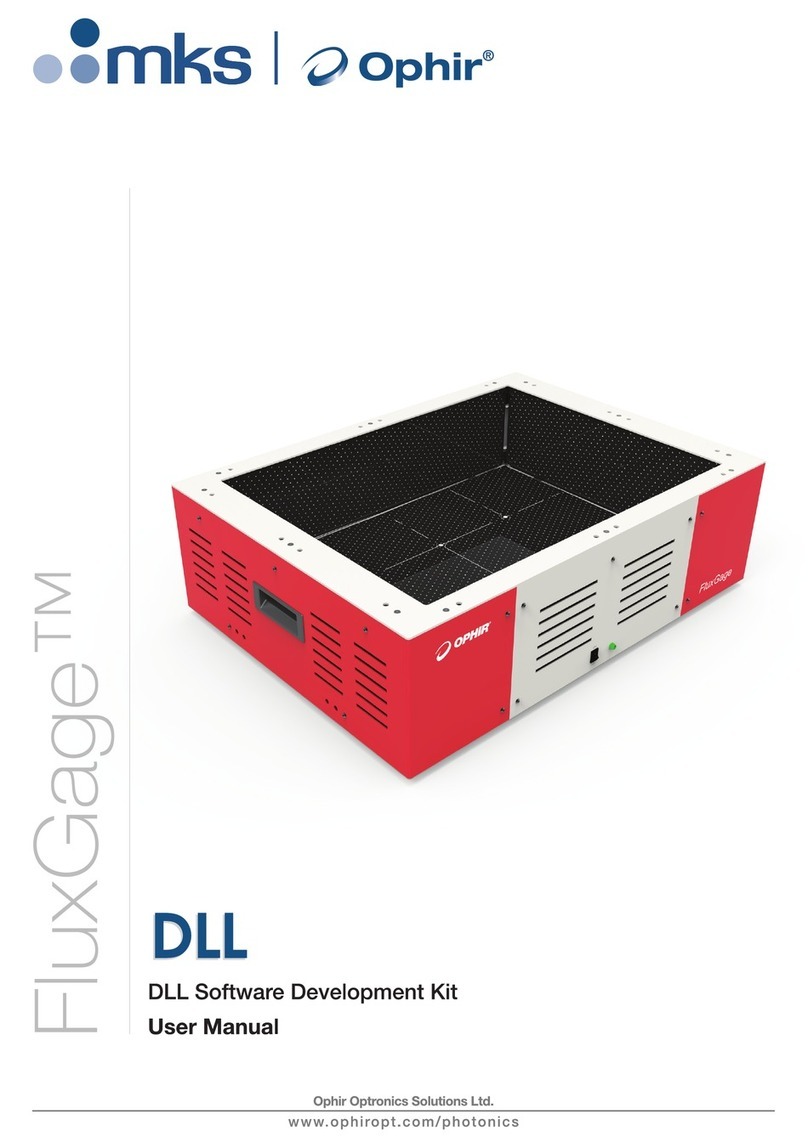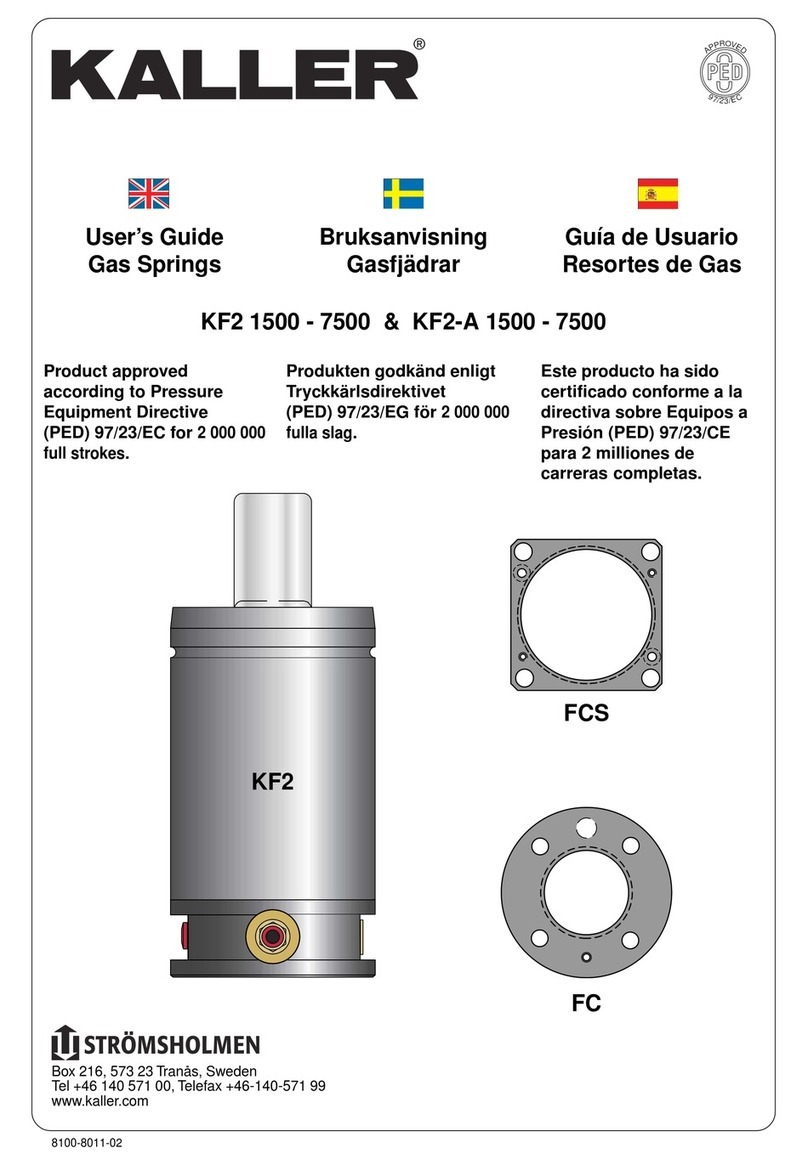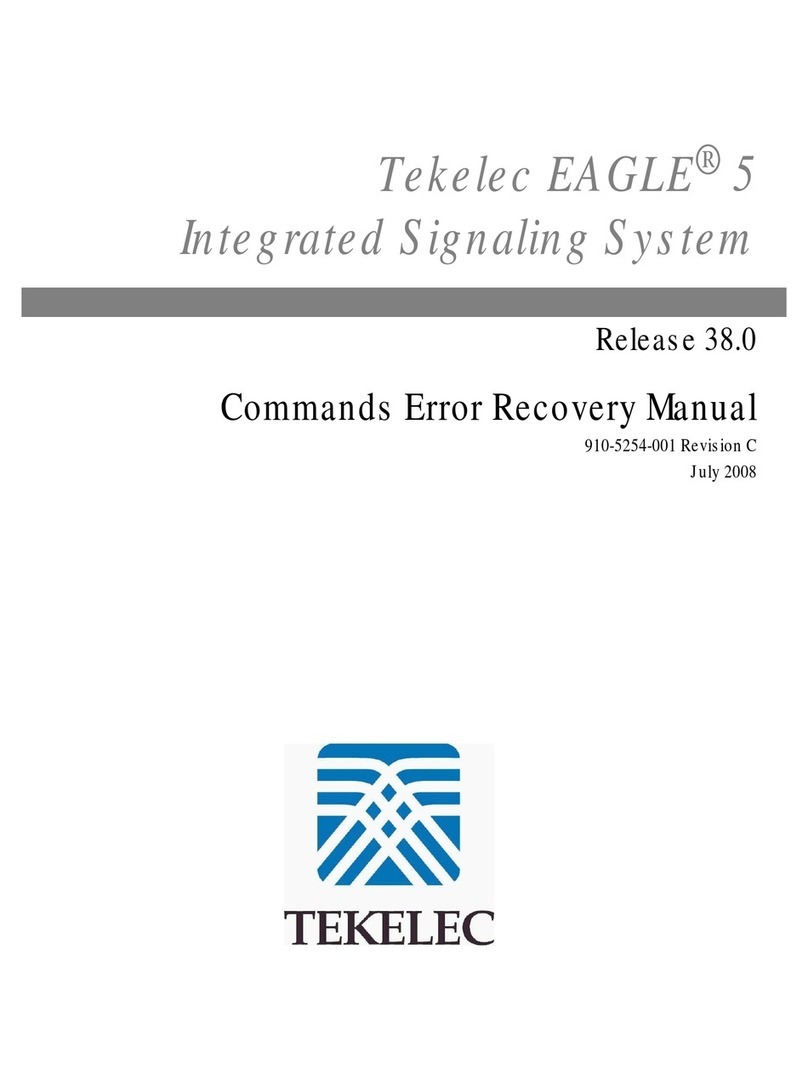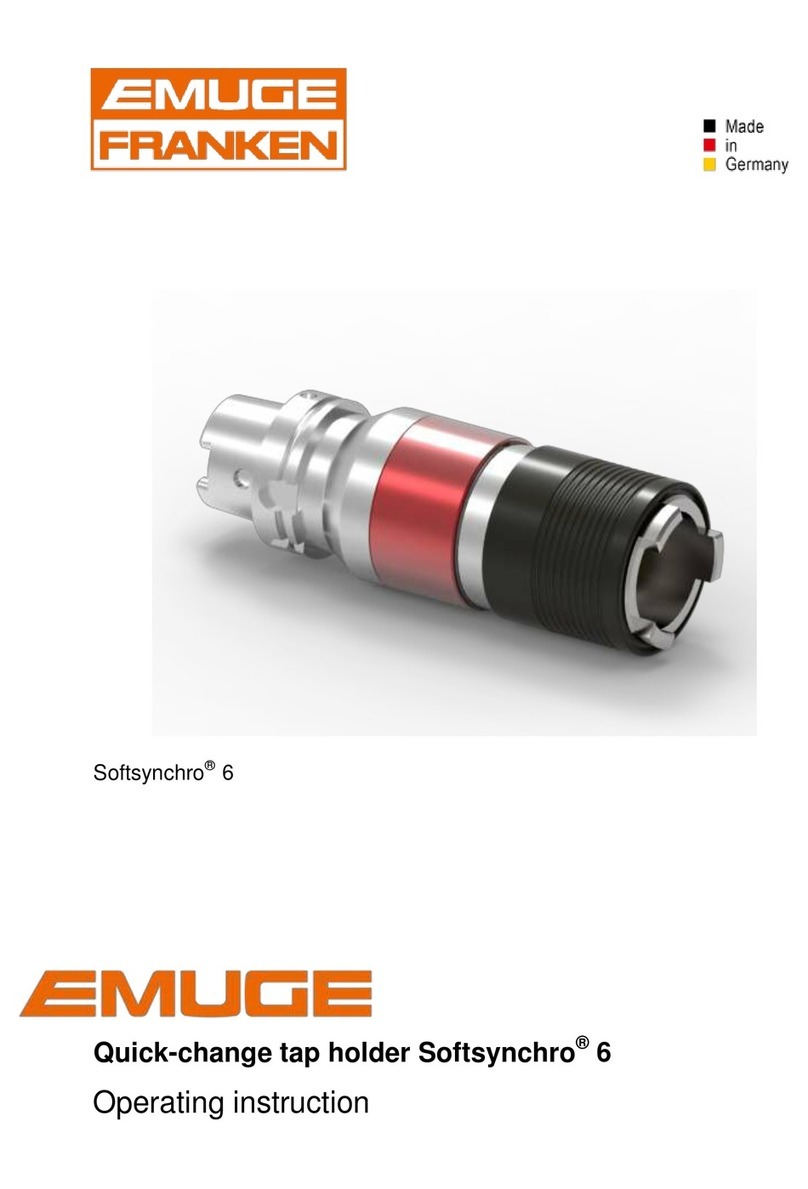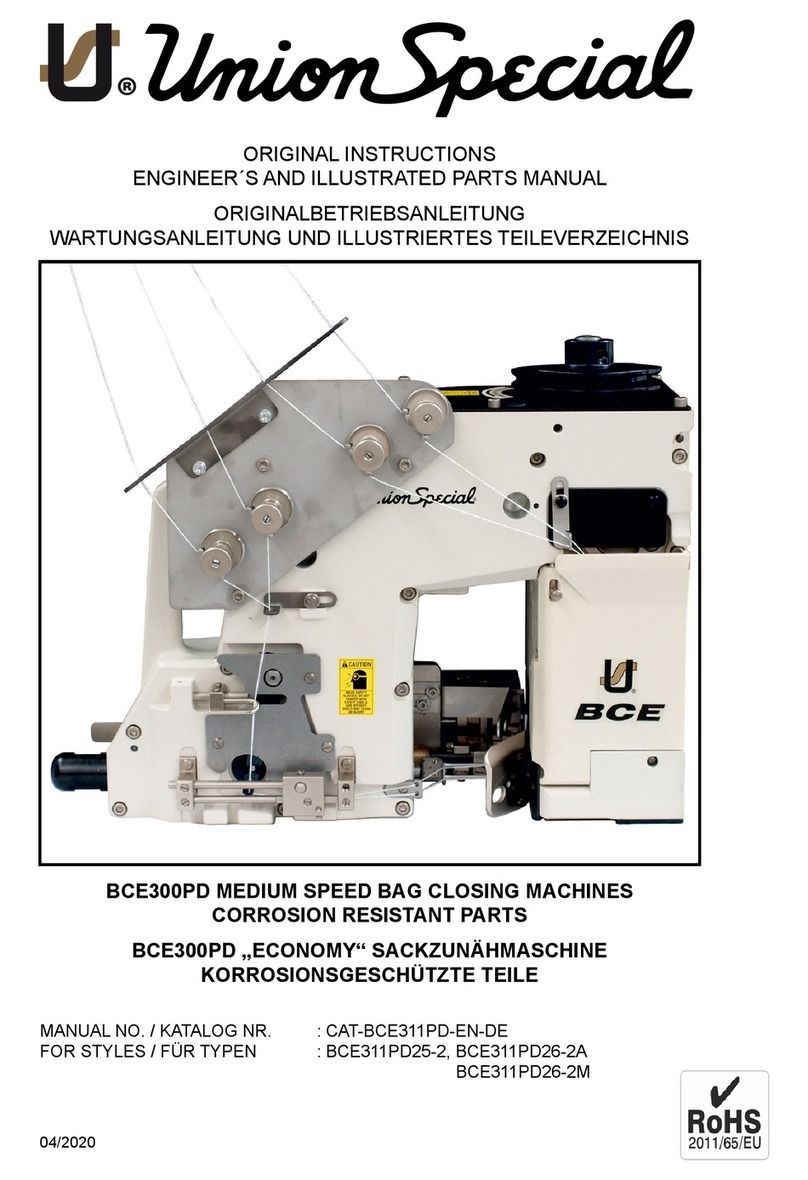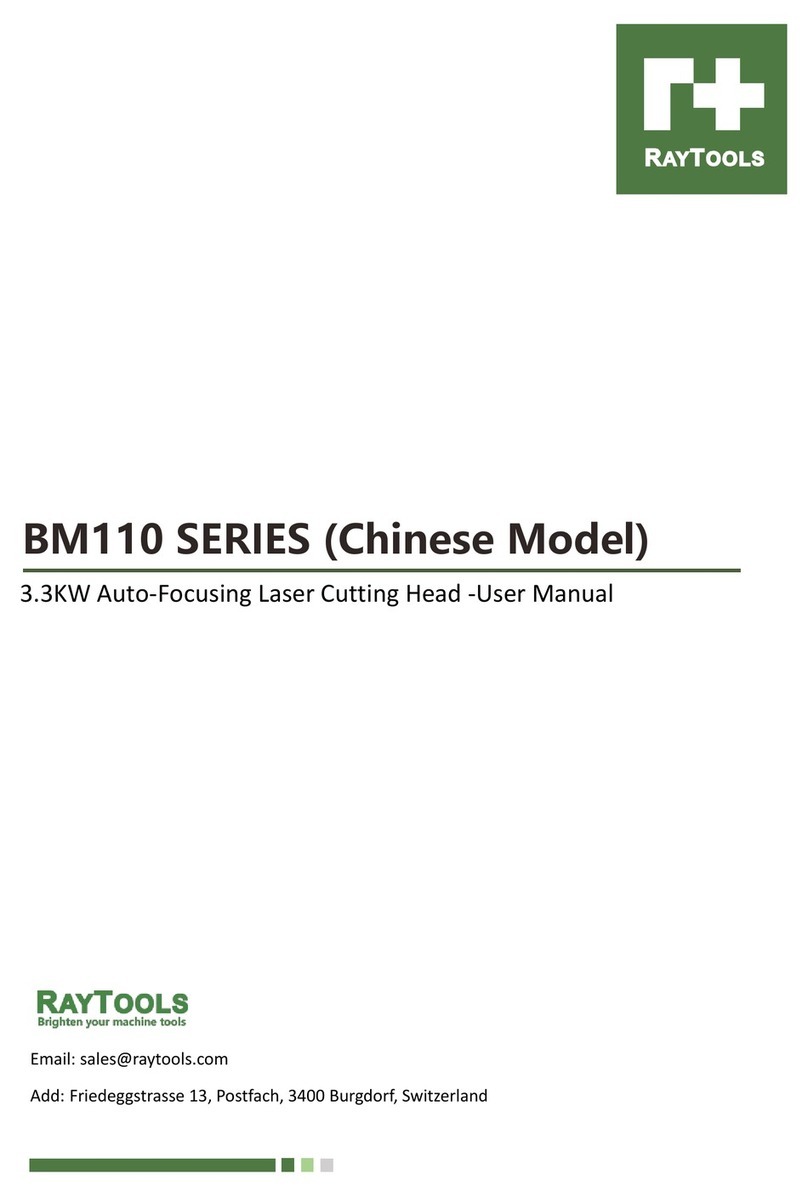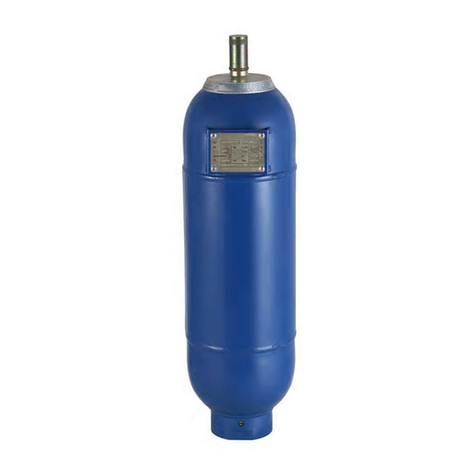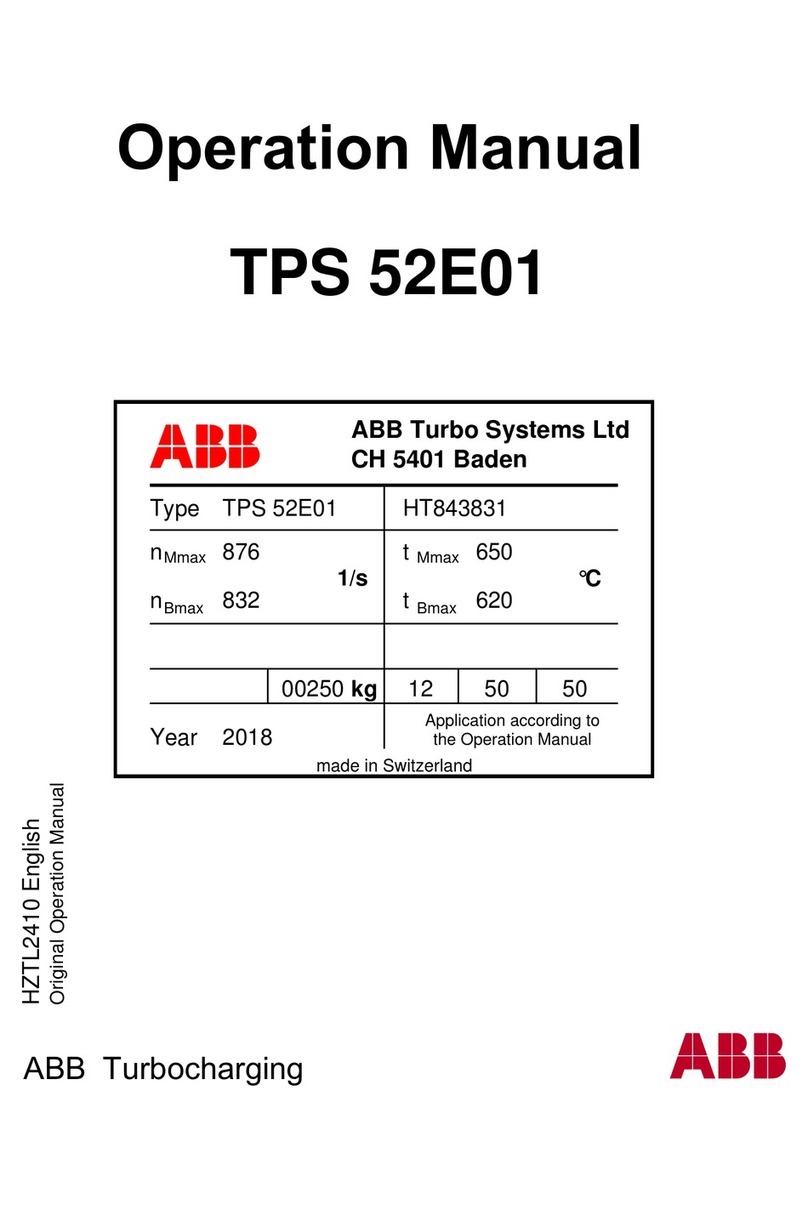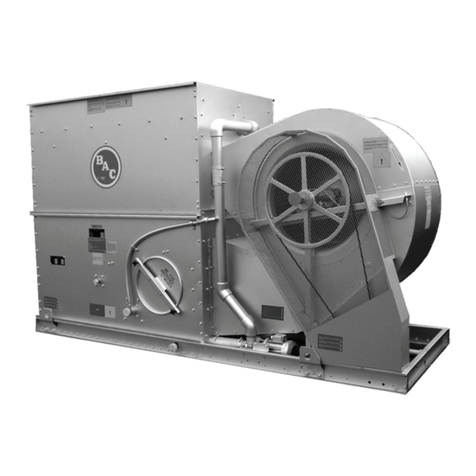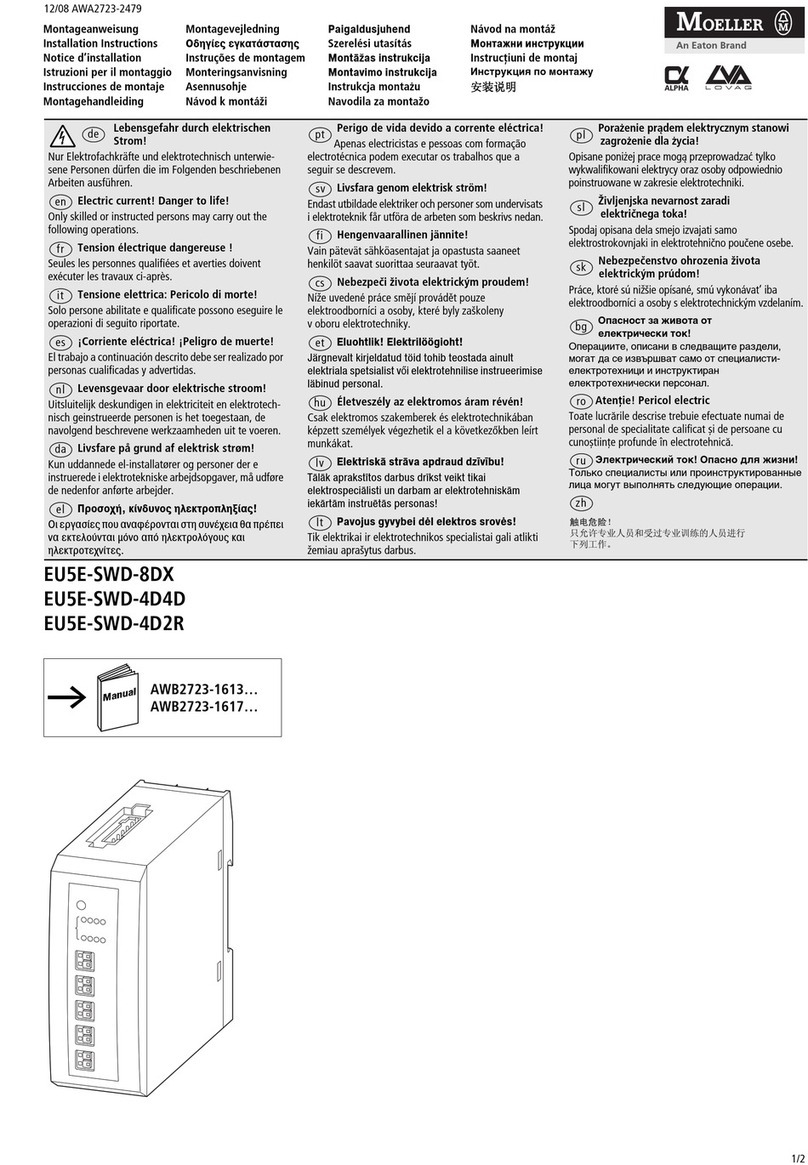Keysight Technologies 11867A Service manual

Keysight Technologies
11867A RF Limiter
Operating and
Service Guide

2 Keysight 11867A Operating and Service Guide
Notices
Copyright Notice
© Keysight Technologies 1995 - 2019
No part of this manual may be reproduced in
any form or by any means (including electronic
storage and retrieval or translation into a for-
eign language) without prior agreement and
written consent from Keysight Technologies as
governed by United States and international
copyright laws.
Manual Part Number
11867-90005
Edition
Edition 5, April 25, 2019
Printed in:
Printed in Malaysia
Published by:
Keysight Technologies
Bayan Lepas Free Industrial Zone,
11900 Penang, Malaysia
Technology Licenses
The hardware and/or software described in
this document are furnished under a license
and may be used or copied only in accordance
with the terms of such license.
Declaration of Conformity
Declarations of Conformity for this product
and for other Keysight products may be down-
loaded from the Web. Go to http://www.key-
sight.com/go/conformity. You can then search
by product number to find the latest Declara-
tion of Conformity.
U.S. Government Rights
The Software is “commercial computer soft-
ware,” as defined by Federal Acquisition Regu-
lation (“FAR”) 2.101. Pursuant to FAR 12.212
and 27.405-3 and Department of Defense FAR
Supplement (“DFARS”) 227.7202, the U.S.
government acquires commercial computer
software under the same terms by which the
software is customarily provided to the public.
Accordingly, Keysight provides the Software to
U.S. government customers under its standard
commercial license, which is embodied in its
End User License Agreement (EULA), a copy of
which can be found at http://www.key-
sight.com/find/sweula. The license set forth in
the EULA represents the exclusive authority by
which the U.S. government may use, modify,
distribute, or disclose the Software. The EULA
and the license set forth therein, does not
require or permit, among other things, that
Keysight: (1) Furnish technical information
related to commercial computer software or
commercial computer software documenta-
tion that is not customarily provided to the
public; or (2) Relinquish to, or otherwise pro-
vide, the government rights in excess of these
rights customarily provided to the public to
use, modify, reproduce, release, perform, dis-
play, or disclose commercial computer soft-
ware or commercial computer software
documentation. No additional government
requirements beyond those set forth in the
EULA shall apply, except to the extent that
those terms, rights, or licenses are explicitly
required from all providers of commercial
computer software pursuant to the FAR and
the DFARS and are set forth specifically in
writing elsewhere in the EULA. Keysight shall
be under no obligation to update, revise or
otherwise modify the Software. With respect
to any technical data as defined by FAR 2.101,
pursuant to FAR 12.211 and 27.404.2 and
DFARS 227.7102, the U.S. government
acquires no greater than Limited Rights as
defined in FAR 27.401 or DFAR 227.7103-5 (c),
as applicable in any technical data.
Warranty
THE MATERIAL CONTAINED IN THIS DOCU-
MENT IS PROVIDED “AS IS,” AND IS SUBJECT
TO BEING CHANGED, WITHOUT NOTICE, IN
FUTURE EDITIONS. FURTHER, TO THE MAXI-
MUM EXTENT PERMITTED BY APPLICABLE
LAW, KEYSIGHT DISCLAIMS ALL WARRAN-
TIES, EITHER EXPRESS OR IMPLIED, WITH
REGARD TO THIS MANUAL AND ANY INFOR-
MATION CONTAINED HEREIN, INCLUDING
BUT NOT LIMITED TO THE IMPLIED WARRAN-
TIES OF MERCHANTABILITY AND FITNESS
FOR A PARTICULAR PURPOSE. KEYSIGHT
SHALL NOT BE LIABLE FOR ERRORS OR FOR
INCIDENTAL OR CONSEQUENTIAL DAMAGES
IN CONNECTION WITH THE FURNISHING,
USE, OR PERFORMANCE OF THIS DOCU-
MENT OR OF ANY INFORMATION CONTAINED
HEREIN. SHOULD KEYSIGHT AND THE USER
HAVE A SEPARATE WRITTEN AGREEMENT
WITH WARRANTY TERMS COVERING THE
MATERIAL IN THIS DOCUMENT THAT CON-
FLICT WITH THESE TERMS, THE WARRANTY
TERMS IN THE SEPARATE AGREEMENT
SHALL CONTROL.
Safety Information
CAUTION
A CAUTION notice denotes a hazard. It calls
attention to an operating procedure, practice,
or the like that, if not correctly performed or
adhered to, could result in damage to the
product or loss of important data. Do not pro-
ceed beyond a CAUTION notice until the indi-
cated conditions are fully understood and met.
WARNING
A WARNING notice denotes a hazard. It calls
attention to an operating procedure, practice,
or the like that, if not correctly performed or
adhered to, could result in personal injury or
death. Do not proceed beyond a WARNING
notice until the indicated conditions are fully
understood and met.

Keysight 11867A Operating and Service Guide 3
Waste Electrical and Electronic Equipment (WEEE) Directive
This instrument complies with the WEEE Directive marking requirement. This affixed product label
indicates that you must not discard this electrical or electronic product in domestic household
waste.
Product category:
With reference to the equipment types in the WEEE directive Annex 1, this instrument is classified
as a “Monitoring and Control Instrument” product.
The affixed product label is as shown below.
Do not dispose in domestic household waste.
To return this unwanted instrument, contact your nearest Keysight Service Center, or visit http://
about.keysight.com/en/companyinfo/environment/takeback.shtml for more information.
Sales and Technical Support
To contact Keysight for sales and technical support, refer to the support links on the following
Keysight websites:
–www.keysight.com/find/mta
(product-specific information and support, software and documentation updates)
–www.keysight.com/find/assist
(worldwide contact information for repair and service)

4 Keysight 11867A Operating and Service Guide
THIS PAGE HAS BEEN INTENTIONALLY LEFT BLANK.

Keysight 11867A Operating and Service Guide 5
Table of Contents
Waste Electrical and Electronic Equipment (WEEE) Directive . . . . . . . . . . . . . . . . . . . . 3
Product category: . . . . . . . . . . . . . . . . . . . . . . . . . . . . . . . . . . . . . . . . . . . . . . . . . . . . 3
Sales and Technical Support . . . . . . . . . . . . . . . . . . . . . . . . . . . . . . . . . . . . . . . . . . . . . . 3
List of Figures . . . . . . . . . . . . . . . . . . . . . . . . . . . . . . . . . . . . . . . . . . . . . . . . . . . . . . . . . . 7
List of Tables . . . . . . . . . . . . . . . . . . . . . . . . . . . . . . . . . . . . . . . . . . . . . . . . . . . . . . . . . . . 9
General Information . . . . . . . . . . . . . . . . . . . . . . . . . . . . . . . . . . . . . . . . . . . . . . . . . . . . 11
Introduction . . . . . . . . . . . . . . . . . . . . . . . . . . . . . . . . . . . . . . . . . . . . . . . . . . . . . . . . 11
Description . . . . . . . . . . . . . . . . . . . . . . . . . . . . . . . . . . . . . . . . . . . . . . . . . . . . . . . . . 12
Installation . . . . . . . . . . . . . . . . . . . . . . . . . . . . . . . . . . . . . . . . . . . . . . . . . . . . . . . . . . . 14
Initial inspection . . . . . . . . . . . . . . . . . . . . . . . . . . . . . . . . . . . . . . . . . . . . . . . . . . . . . 14
Electrical inspection . . . . . . . . . . . . . . . . . . . . . . . . . . . . . . . . . . . . . . . . . . . . . . . . . . 14
Storage environment . . . . . . . . . . . . . . . . . . . . . . . . . . . . . . . . . . . . . . . . . . . . . . . . . 14
Operation . . . . . . . . . . . . . . . . . . . . . . . . . . . . . . . . . . . . . . . . . . . . . . . . . . . . . . . . . . . . 15
Operating environment . . . . . . . . . . . . . . . . . . . . . . . . . . . . . . . . . . . . . . . . . . . . . . . 15
Mating connectors . . . . . . . . . . . . . . . . . . . . . . . . . . . . . . . . . . . . . . . . . . . . . . . . . . . 15
Instructions . . . . . . . . . . . . . . . . . . . . . . . . . . . . . . . . . . . . . . . . . . . . . . . . . . . . . . . . 15
Repair . . . . . . . . . . . . . . . . . . . . . . . . . . . . . . . . . . . . . . . . . . . . . . . . . . . . . . . . . . . . . . . 17
Diodes . . . . . . . . . . . . . . . . . . . . . . . . . . . . . . . . . . . . . . . . . . . . . . . . . . . . . . . . . . . . 17
Connectors . . . . . . . . . . . . . . . . . . . . . . . . . . . . . . . . . . . . . . . . . . . . . . . . . . . . . . . . . 17

6 Keysight 11867A Operating and Service Guide
THIS PAGE HAS BEEN INTENTIONALLY LEFT BLANK.

Keysight 11867A Operating and Service Guide 7
List of Figures
Figure 1 Typical insertion loss versus frequency . . . . . . . . . . . . . . . . . . . . . . . . 12
Figure 2 Typical return loss versus frequency . . . . . . . . . . . . . . . . . . . . . . . . . . 13
Figure 3 Typical output power versus input power at 25°C . . . . . . . . . . . . . . . 13
Figure 4 Typical harmonic distortion versus input power . . . . . . . . . . . . . . . . . 16
Figure 5 11867A illustrated parts breakdown . . . . . . . . . . . . . . . . . . . . . . . . . . 17

8 Keysight 11867A Operating and Service Guide
THIS PAGE HAS BEEN INTENTIONALLY LEFT BLANK.

10 Keysight 11867A Operating and Service Guide
THIS PAGE HAS BEEN INTENTIONALLY LEFT BLANK.

Keysight 11867A Operating and Service Guide 11
General Information
To obtain optimum performance from this RF limiter, observe these simple precautions:
– Make connections carefully to avoid misalignment and connector damage, which will result in
inaccurate measurements.
– Keep the connectors free of dirt and any particles.
– When you clean the connectors, try using compressed air first. Do not use abrasives. With a
clean foam swab, apply only isopropyl alcohol.
– For more information, refer to the Connector Care for RF and Microwave Coaxial Connectors
document. It can be viewed online by searching for part number 08510-90064 at
www.keysight.com.
Introduction
The 11867A RF limiter is an instrument accessory that can be used to protect input circuitry from
transients and accidental overloads. This manual explains how to use the limiter, briefly describes
tests that can be used to verify the specifications, and explains how to repair the limiter.
Instrument specifications are listed in Table 1. These specifications are performance standards or
limits against which the instrument may be tested.
Table 1 11867A RF limiter specifications
Parameter Specification
Frequency range 10 Hz to 1800 MHz
Insertion loss <1.0 dB
Frequency response[a]
[a] For operation to 2.4 GHz, see typical response shown in Figure 1.
<±0.25 dB about a 0.25 dB/GHz slope
Maximum input power levels
– Continuous
–Pulse
– Limited threshold
10 watts average (+40 dBm);
<1.3 Vdc with no RF applied;
0.0 Vdc with RF applied
100 watts peak, pulse width ~1msec, 0.001 duty cycle
1 mW (0 dBm) gives approximately 1 dB compression
Impedance 50 ohm nominal
Reflection coefficient <0.13 (1.3:1 VSWR)
RF input connector[b]
[b] Device is not suitable for bilateral operation. Input and output may not be interchanged.
Type-N female
RF output connector[b] Type-N male
Weight 90 grams (0.2 lb)
Dimensions 21 mm x 60 mm (0.81 in. x 2.38 in.)

12 Keysight 11867A Operating and Service Guide
Figure 1 Typical insertion loss versus frequency
Description
The 11867A RF limiter is a unidirectional, solid state, passive device for use from 10 Hz to 1800
MHz. It consists of four oxide-passivated silicon diodes: two PIN diodes and two Schottky-Barrier
diodes. These diodes are functionally integrated in a 50 ohm transmission line as part of a low pass
filter with a cutoff frequency (Fc) of approximately 2.5 GHz. The limiter has no adjustments, and its
diodes are not field replaceable.
For noise considerations, the limiter behaves as a thermal resistance shunted across the
transmission line. The excess noise temperature is less than 20° Kelvin. This results in a noise figure
that is essentially equal to the insertion loss below the limiting threshold. (Figure 1 shows typical
insertion loss below the limiting threshold.)
The VSWR specification in Table 1 applies below the limiting threshold. (Typical VSWR into either
port is shown in Figure 2.) VSWR above the threshold is unpredictable, since the limiter effects its
limiting by reflecting some of the input power.
Limiting is non-linear and depends on input power and ambient temperature. The typical limiting
curves shown in Figure 3 apply at an ambient temperature of 25°C.

Keysight 11867A Operating and Service Guide 13
Figure 2 Typical return loss versus frequency
Figure 3 Typical output power versus input power at 25°C

14 Keysight 11867A Operating and Service Guide
Installation
Initial inspection
Verify that the shipment is complete by referring to the contents list in the shipping container.If the
container or device appears damaged, or if the shipment is incomplete, contact Keysight
Technologies — see “Sales and Technical Support” on page 3. Keysight will arrange for repair or
replacement of incomplete or damaged shipments without waiting for a settlement from the
transportation company.
Electrical inspection
VSWR
To check that the limiter meets the VSWR specification listed in Table 1, use any test system that
can measure return loss. Terminate the unused port with an accurate 50 ohm termination. Incident
power must be less than 1 mW (the limiting threshold).
Insertion loss and frequency response
To check that the limiter meets the insertion loss and frequency response specifications listed in
Table 1, use any test system that can measure insertion loss. The input and output ports must be
provided with a good 50 ohm match. Incident power must be less than 1 mW (the limiting
threshold).
Limiting
The power limiting performance can be compared against the typical performance shown in
Figure 3 by using the same test system that is used to check insertion loss. Incident power should
be slowly increased from below 1 mW to 10 W while the output power is observed.
Storage environment
The limiter should be stored in a clean, dry environment with the following environmental
limitations:
– Temperature: -40°C to +75°C
– Humidity: <95% relative
– Altitude: <7620 meters (25,000 feet)
CAUTION
During the test of limiting specifications, do not apply more than 10W average power to the
limiter. There should be <1.3 Vdc with no RF applied, and 0.0 Vdc when RF is applied.
Permanent damage to the diodes could result from exceeding these levels.

Keysight 11867A Operating and Service Guide 15
Operation
Operating environment
The operating environment should be with the following limitations:
– Temperature: 0°C to +55°C
– Humidity: <95% relative
– Altitude: <4572 meters (15,000 feet)
Mating connectors
Mating connectors used with the limiter should be Type-N connectors that are compatible with US
MIL-C-39012.
Instructions
For reliable operation over its full frequency and power range, the limiter must be used as a
unidirectional device. Incident power must be applied as shown on the label of the limiter. The
limiter can be used to protect the input mixer of a spectrum analyzer, the sampler of a network
analyzer, the power sensor (or thermistor mount) of a power meter, or the input circuitry of any
other device that might be subjected to transients and accidental overloads.
The use of an attenuator between the limiter and the device it is protecting is recommended to
minimize measurement uncertainty that is due to multiple mismatches. For example, set the input
attenuator of a spectrum analyzer to at least 10 dB.
Harmonic distortion is generated by the limiter while it is limiting. If the incident signal exceeds the
limiting threshold, use attenuation between the limiter and the source to reduce the signal below 1
mW. Typical harmonic distortion below the limiting threshold is shown in Figure 4. The limiter will
still prevent transients from damaging the device it is protecting.
CAUTION
Do not apply more than 10 W average power or 100 W peak power to the limiter. There
should be <1.3 Vdc with no RF applied, and 0.0 Vdc when RF is applied. Permanent damage
to the diodes could result from exceeding these levels.

16 Keysight 11867A Operating and Service Guide
Figure 4 Typical harmonic distortion versus input power

Keysight 11867A Operating and Service Guide 17
Repair
Diodes
If the diodes of the limiter fail to function correctly or have been damaged, return the limiter to
Keysight Technologies for repair – see“Sales and Technical Support” on page 3. Do NOT attempt
to remove or replace the diodes.
Connectors
If a connector is damaged or worn, it can be disassembled, the worn or damaged parts replaced,
and the connector reassembled.To disassemble a connector, carefully remove the label, place the
limiter in a vise, and remove the connector body, which has right-hand threads. Replace the worn
or damaged part (see Figure 5) and reassemble the connector.
Figure 5 11867A illustrated parts breakdown

18 Keysight 11867A Operating and Service Guide
Table 2 11867A illustrated parts breakdown
Item Description Part number
1 Nut, RF Connector 1250-0918
2 Ring, RF Connector, Series N 1250-0016
3 Housing, Male Connector 08491-2100
4 Pin Assembly, Male 08491-4000
5 Spacer 08491-20003
6 Plug 11867-20001
7 Contact, Elastomer 8160-0729
8 Limiter Assembly (not field replaceable) --
9 Spacer 08491-20003
10 Pin Assembly, Female 08491-4001
11 Connector, Female 08491-2101
12 Spacer, Outer Conductor (optional, not shown) 08742-0006

This information is subject to change
without notice. Always refer to the
Keysight website for the latest
revision.
© Keysight Technologies 1995 - 2019
Edition 5, April 25, 2019
Printed in Malaysia
*11867-90005*
11867-90005
www.keysight.com
Table of contents
Other Keysight Technologies Industrial Equipment manuals
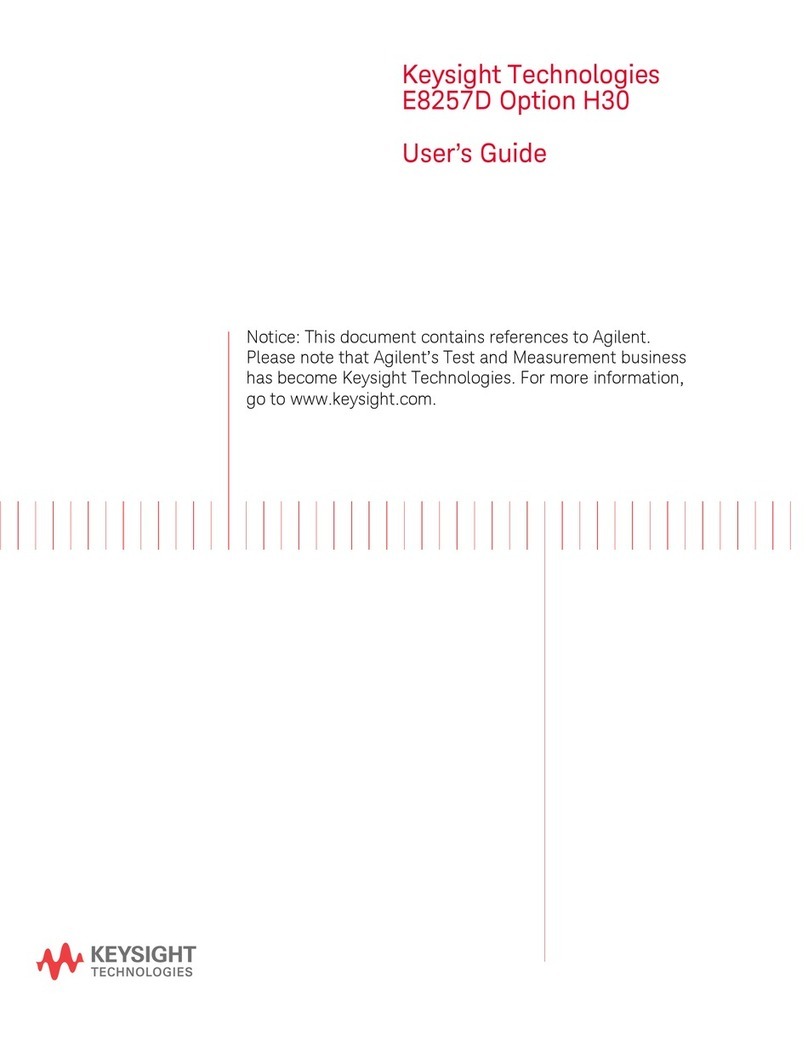
Keysight Technologies
Keysight Technologies E8257D User manual
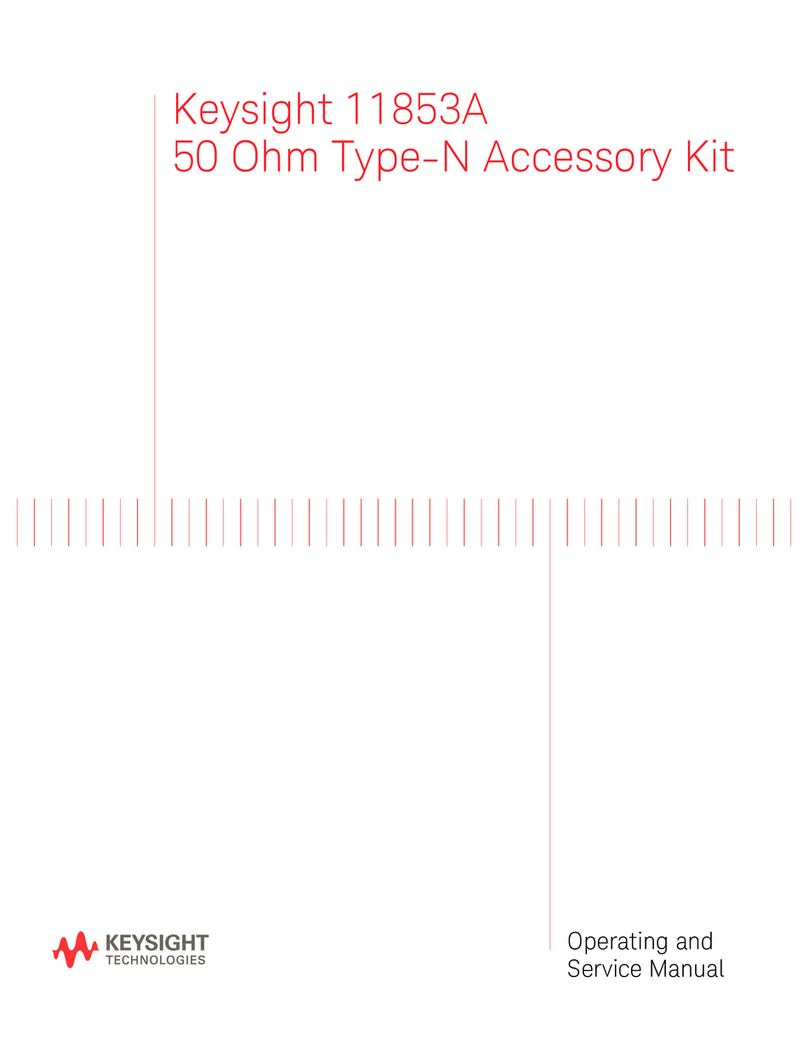
Keysight Technologies
Keysight Technologies 11853A Service manual

Keysight Technologies
Keysight Technologies 16452A Operation manual
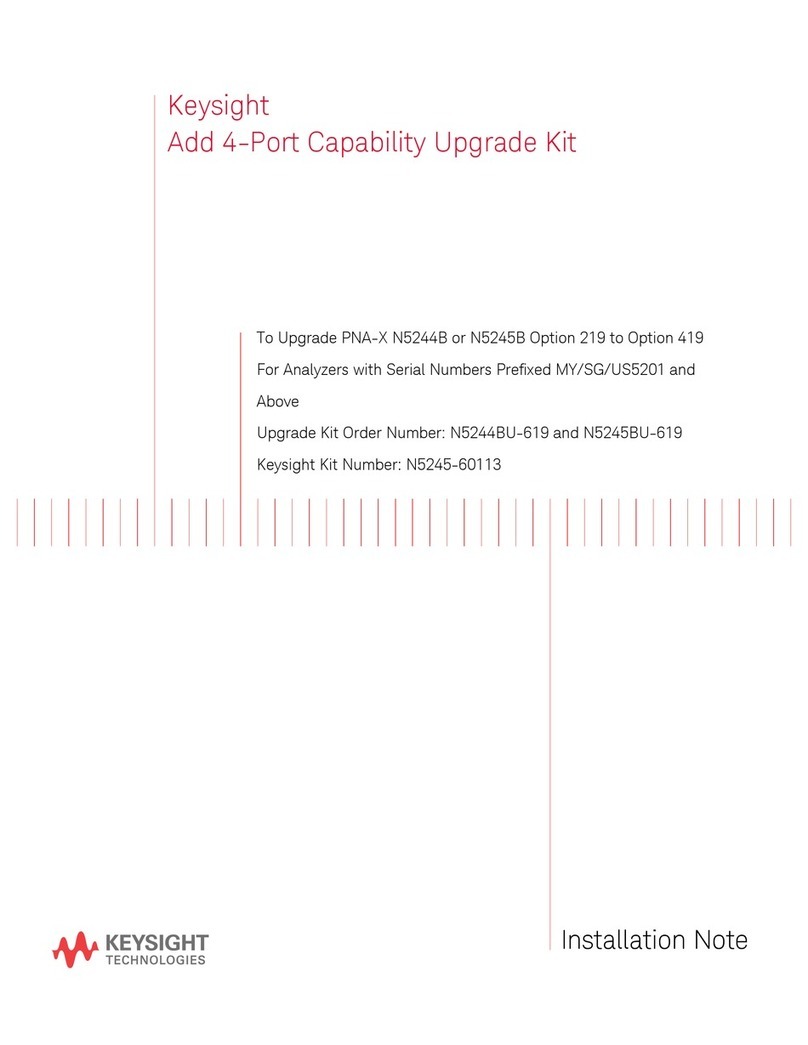
Keysight Technologies
Keysight Technologies N5245BU-619 Installation and operation manual
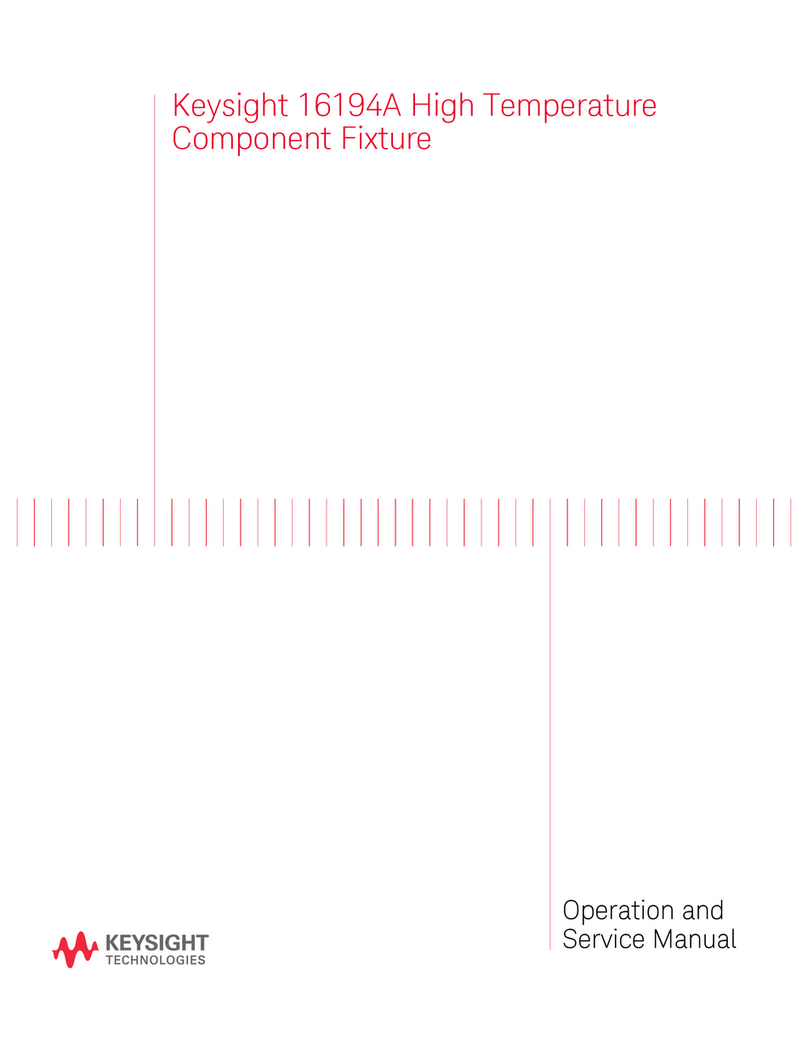
Keysight Technologies
Keysight Technologies 16194A Operation manual
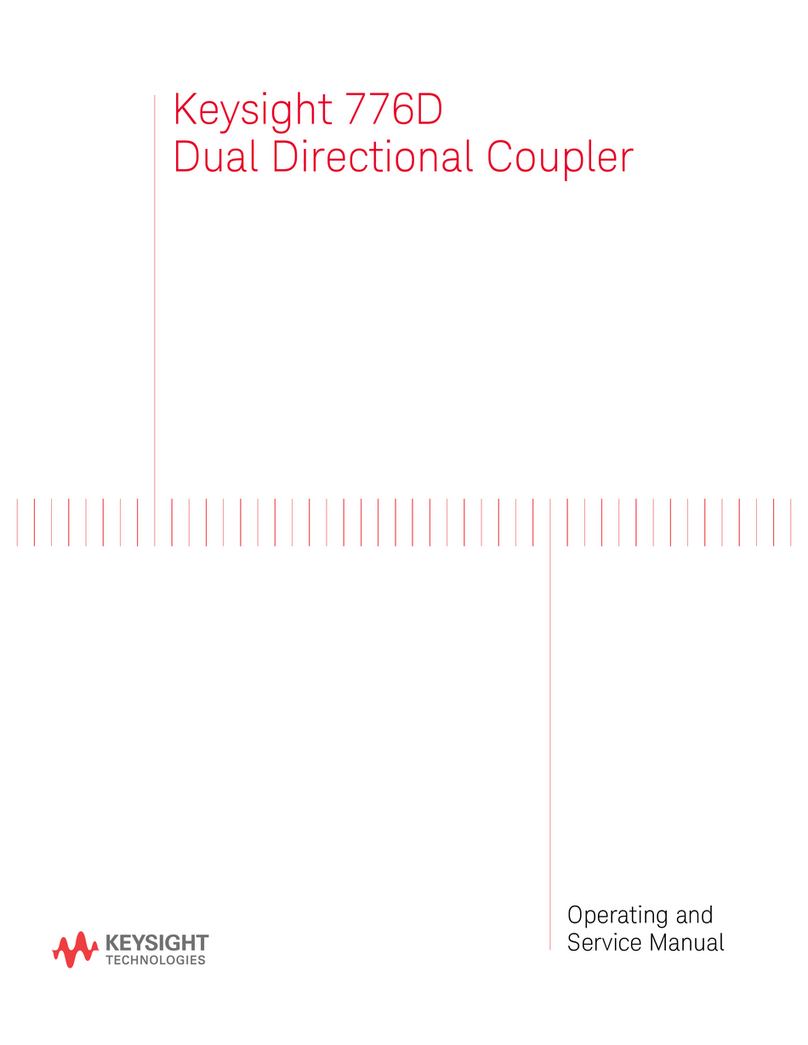
Keysight Technologies
Keysight Technologies 776D Service manual
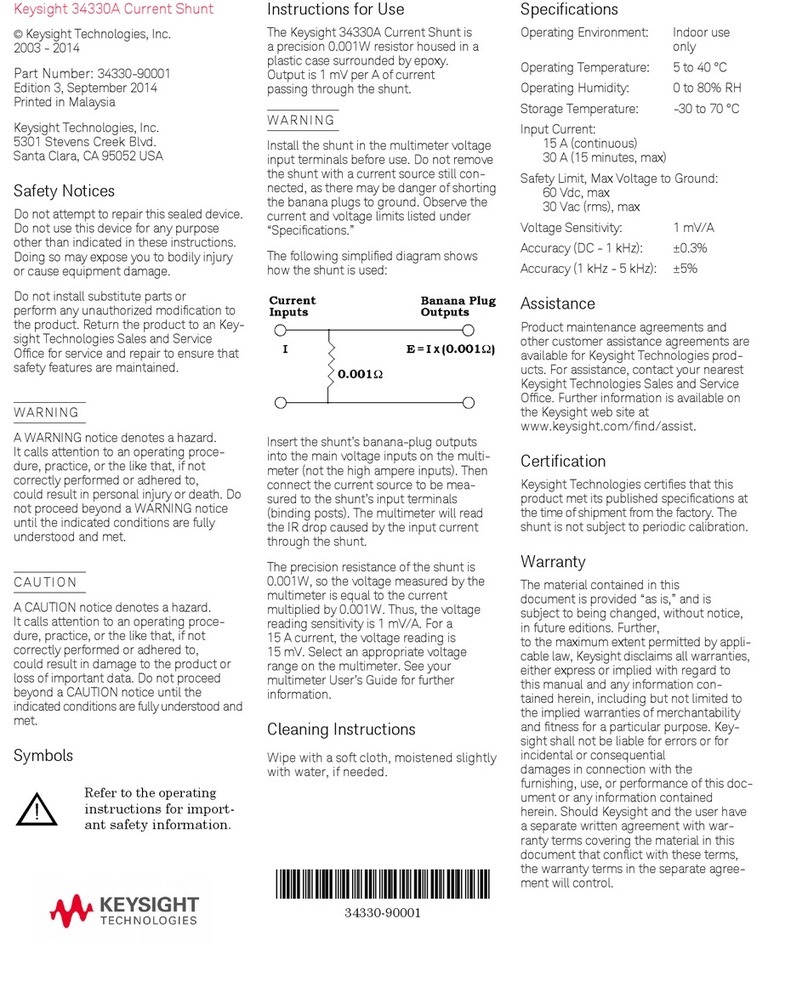
Keysight Technologies
Keysight Technologies 34330A User manual

